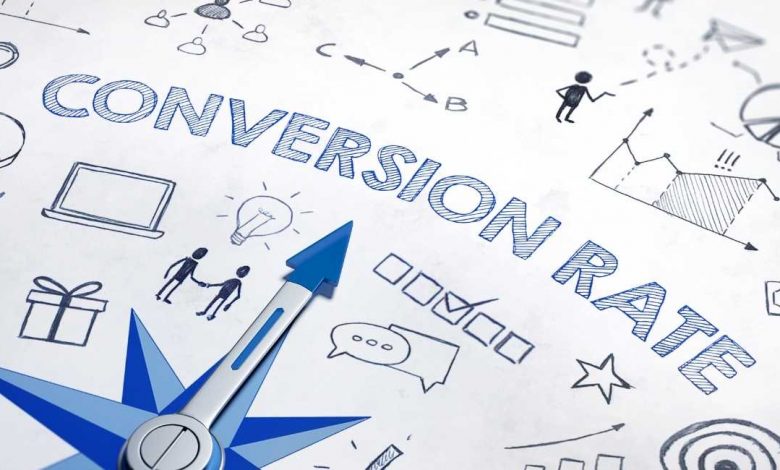How to increase website conversion Rate

It is no secret that the overwhelming majority of your website visitors do not perform useful actions from a marketing point of view. According to recent Forrester research, 96% of people who visit a site do not become buyers (customers, customers, subscribers). That is, on average, only 4% of web resource users bring real business benefits. This 4% is the conversion rate (from the Latin conversion – transformation) of site visitors into buyers.
This is one of the most important metrics in marketing since the success of a company largely depends on the conversion rate. How can you increase the website conversion of your site? In today’s article, we will take a closer look at the main factors that affect this indicator, as well as understand the methods of increasing conversion.
Content:
- Traffic and “useful” visitors
- Segmentation and remarketing
- How does content affect conversions?
- Interactive elements
- What is the normal conversion rate?
Find a buyer or “catch up” traffic?
Often the first goal of a developing company (and sometimes it is a constant development strategy) is to increase traffic to a web resource. All forces and means are aimed at increasing traffic. The methods can be very different: SEO optimization, contextual advertising, Internet mailings, etc. However, what is overlooked is the fact that the amount of traffic is not proportional to its quality. After all, as a rule, the main goal of creating a web resource (business) is to sell a product (service). Therefore, it is important to attract not just a visitor, but an interested user, a potential client.
An example. Experts optinbox.com service in their practice faced with similar requests – “to increase website conversion traffic.” Often, achieving this goal is associated with a high frequency of sending notifications (push, email, or SMS ). The increased frequency of mailings ultimately leads to a decrease in CTR (according to the statistics of sending push notifications), and, subsequently, to unsubscribing from mailings (see Churn Rate). Thus, despite the growth in traffic, within two weeks or a month, the site’s audience is completely renewed, the web resource loses its regular readers, the percentage of returning visitors is steadily falling.
In order to change the strategy, you need to refer to the calculations, in particular, the current conversion rate and the factors that affect it.
The formula for the Increase website conversion rate in internet marketing is the number of leads / the number of clicks * 100%.
The simplest example: if 200 Internet users visited your site in a month, and 5 of them made a purchase, then the conversion will be 2.5% (5/200 * 100%).
To increase the conversion of the site even while planning an advertising campaign, you need to:
- define your target audience;
- highlight effective communication channels;
- calculate the projected cost of attracting a lead.
It is also important to understand the relationship between the invested funds to drive traffic and the bottom line (ROI). This will determine the value of the marketing channel.
For comparison, let’s calculate the channel conversion rate and the cost of attracting a lead using the example of Google contextual advertising. Let’s say 200 transitions were made to the site from contextual advertising, and 10 of them ended with the target action (registration, ordering), the cost of a click is $ 2. Accordingly, the conversion rate (CR) for the channel will be 10/200 * 100% = 5%, and the cost per lead (CPL) will be $ 2 * 200/10 = $ 40. Based on the number of purchases made and profits, one can draw conclusions about the advisability of such investments.
This is primarily due to the fact that in push technology there is no pay per click or view, but for the number of subscribers. In addition, push-mailing can be more flexibly customized to the needs of the advertising campaign. For example, here you can clearly define the time of sending and displaying notifications on the recipient’s screen, add additional buttons, collect statistics and analyze it for further mailings. That is, in the case of “push notifications”, the increase in conversion can be influenced by many methods without additional monetary costs. This marketing channel combines the advantages of both Internet mailings (increases loyalty, user awareness) and contextual advertising (returns the visitor to the site, leads to targeted actions). Send push notifications from your site.
How to increase conversion into a purchase on the site: segmentation and remarketing
To work with targeted traffic, you will need a set of special tools. The first is audience Segmentation according to various specified parameters (most often by interests, geography). The second is remarketing (or retargeting) in the sense of returning a visitor to the site.
Why is this important for increasing conversions? Segmentation of visitors allows you to create targeted messages, competently build communication with a client. Remarketing is a tool for working with a prepared, interested user. After all, this is the one who has already familiarized himself with your resource once, which means that the initial contact with it has been established. In addition, thanks to segmentation, you know its request (see tags for newsletters). It remains to use the channels to return such a visitor to your site.
What could it be?
- The usual, but sometimes unreasonably expensive contextual advertising from Google or other ad networks.
- Targeted mailings.
Compare Push Notifications and Remarketing Ads.
For mobile audiences, there is an innovative way to “get back to the site” – Progressive Web Apps (PWA). An alternative to the mobile version of the site and the usual mobile application combines their best qualities.
Website content and conversion
The content of a web resource is a form of interaction with visitors. Just as the success of an offline store is associated with its design, staff, convenience, product selection, increasing the conversion of an online store directly depends on:
- the accuracy and correctness of the information provided (price, availability of goods);
- completeness and reliability of product descriptions (clear characteristics);
- the quality and clarity of illustrations;
- availability of ratings and reviews.
It is equally important to ensure good navigation through the resource. Often the reason for refusals (leaving the site) is an incomprehensible structure, lack of filters, links to sections. Such functionality allows you to keep the visitor on the site and give him the opportunity to conveniently select the desired product.
Do not forget that proven marketing tools will help increase website conversions and increase income. Read the article on Upsell.
Another feature of online stores and e-commerce sites is a high percentage of abandoned carts. Forrester’s research indicates that over 70% of users who place items in their shopping cart leave the site without ordering. It is necessary to pay attention to this vulnerability: check the convenience of payment, available money transfer methods, etc. If at this stage you continue to lose leads, use triggered mailings.
It is important for information resources to disclose the given topics. In this case, increase website conversion of the site can be considered a subscription to news (in the future, perhaps, the purchase of info-products).
When using external marketing channels to attract users, it is also important to pay attention to the content of the advertising messages. So, the title and description of the push notification, the Viber-mailing message must correspond to the page to which it leads, and the contextual advertisement must match the content of the site. In SEO optimization, this approach is called page-to-search relevance. If the advertising message does not correspond to the real offer of the company, the visitor forms a distrust of the brand, and the visit is not converted into a purchase.
Buttons, widgets, additional elements
Particular attention should be paid to interactive elements, that is, those that will allow:
- to involve the client more, to interest;
- provoke his response (feedback, wishes);
- continue communication after the visit (for example, subscription to the newsletter);
- make a decision on the purchase of goods (for example, a promotional offer, a discount coupon).
Interactive elements include:
- buttons;
- widgets;
- pop-up (pop-up window);
- banners, etc.
Buttons are often more attractive to users than simple links. They draw more attention to themselves, so they should be used to navigate to landing pages (landing page, registration, rates, shopping cart, etc.). These are the elements that call the user to action. Read more about how to use the Call-to-Action buttons.
Widgets can have different functionality and design. For example, a calculator for building portal visitors can be an important element to increase your website conversion. Such a widget will allow a potential client to ask the price and prepare for ordering services.
A pop-up window can notify you about a promotion or a hot offer.
You also need to take care of the feedback from the visitors. A good solution is an online chat or online support by email.
Including interactive elements can be used in marketing channels to re-attract customers.
For example, push notifications are convenient in that they come to the addressee’s desktop when he is online. Therefore, additional elements in the push can attract the attention of the recipient and provoke his transition to the site (see the article on the use of large images in push notifications). In addition, the push service has the ability to use additional buttons, and with their help to segment the audience into special categories (for example, to divide the audience into male, female, etc.). After such segmentation, it is easier to create an interesting and catchy mailing list for certain categories of subscribers. Push notifications are sent to all user’s devices in a convenient and visible format, therefore their CTR is much higher than that of email or SMS-mailings… For example, push-notifications can set up long-term contact with a potential customer and greatly affect the increase in purchase conversion.
What is the average website purchase conversion rate?
The average purchase increase website conversion rate varies by business.
So, for e-commerce, the conversion rate varies from 1.5% to 7%, and only 10% of top web resources reach the highest level.
For B2B services, this figure is slightly higher and amounts to 2.5-12%.
And the conversion records are set by the resources of the financial segment. Here, the indicator values start at 5% and reach 25% (niche leaders).
Just because you hit the average in your niche doesn’t mean you need to stay within that scale. This suggests that you have room for growth and further development




